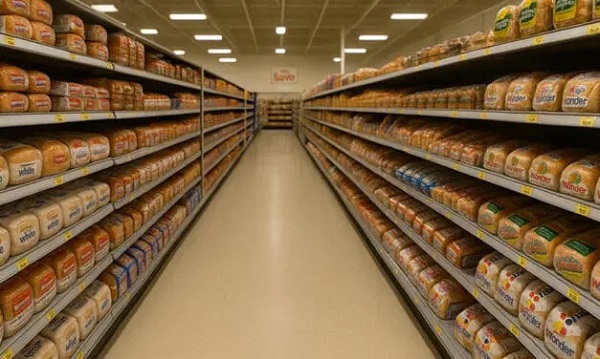Canada’s bread price-fixing scandal is one of the most damaging breaches of corporate trust in the history of Canadian food retail. The recent approval
of a $500-million class-action settlement by an Ontario court is a significant—though partial—step toward accountability. But the story isn’t over.
For over a decade, grocery giants secretly rigged the price of the country’s most basic food item, and most Canadians had no idea.
From 2001 to 2015, retailers and suppliers deliberately coordinated to raise the price of packaged bread, a basic household staple. This kind of illegal arrangement, known as price-fixing, occurs when supposed competitors agree to set prices rather than compete, driving up costs for consumers. Companies named in the lawsuit include Loblaw, its parent company George Weston Ltd., Metro, Sobeys, Walmart and Giant Tiger.
The impact on consumers was steep. Estimates suggest Canadians were overcharged by more than $5 billion over 14 years. The added cost was hidden in weekly grocery bills, largely unnoticed, but cumulatively devastating, especially for lower-income households that spend a greater share of their income on food.
The Competition Bureau, Canada’s competition watchdog, launched its investigation in 2015 after Loblaw came forward as a whistleblower under its Immunity and Leniency Program. In exchange for cooperating, Loblaw and George Weston were granted immunity from criminal prosecution. Their disclosure triggered years of scrutiny. In 2017, the companies attempted to contain the public backlash by offering $25 gift cards to 3.8 million Canadians, a gesture that cost $96 million and was widely seen as inadequate.
More recently, in 2023, Canada Bread pleaded guilty and paid a record $50-million fine for its role in the scheme. Although the violations occurred while it was owned by Maple Leaf Foods, it was Grupo Bimbo—which acquired Canada Bread in 2014—that took responsibility and cooperated with regulators. It was a rare show of accountability in a case otherwise marked by corporate silence.
Despite multiple companies being implicated, only Loblaw, George Weston and Canada Bread have admitted wrongdoing. No fines or sanctions have been imposed on the others. Walmart, Metro, Sobeys and Giant Tiger—all named by Loblaw—deny the allegations. Yet the investigation drags on nearly a decade later.
This imbalance in accountability has deepened public frustration. Many Canadians believe only those who stepped forward have faced consequences,
while others remain untouched. Or perhaps Loblaw threw its competitors under the bus in a calculated effort to save its own reputation?
The $500-million settlement—$404 million of it from Loblaw and George Weston —was approved by an Ontario judge earlier this month as “fair, reasonable, and in the best interests of class members.” The other $96 million reflects the earlier gift card program. What’s left to be paid amounts to about $13 per Canadian adult. After legal fees and administrative costs, 78 per cent of that will go to eligible Canadians outside Quebec, with the remaining 22 per cent reserved for Quebecers, pending a June 16 court hearing.
But for many, the money and the apologies do little to restore trust. If companies can quietly collude on something as essential as bread, it raises questions about what else might be going unnoticed in our grocery bills. The scandal exposed major weaknesses in Canada’s food retail system: toothless competition laws, limited pricing transparency and weak deterrents against collusion. These investigations take too long, and the damage to public confidence lingers long after the cheques are cashed.
Bread is not just a commodity. It symbolizes nourishment, affordability and stability. Manipulating its price isn’t just a legal violation; it’s a betrayal of public trust.
If this case is to be a turning point, it must lead to more than payouts. Canada needs stronger enforcement, faster investigations and real transparency in pricing. Without systemic reform, Canadians will remain vulnerable to the next coordinated “market adjustment,” hiding in plain sight on store shelves.
Dr. Sylvain Charlebois is a Canadian professor and researcher in food distribution and policy. He is senior director of the Agri-Food Analytics Lab at Dalhousie University and co-host of The Food Professor Podcast. He is frequently cited in the media for his insights on food prices, agricultural trends, and the global food supply chain.
Troy Media empowers Canadian community news outlets by providing independent, insightful analysis and commentary. Our mission is to support local media in helping Canadians stay informed and engaged by delivering reliable content that strengthens community connections and deepens understanding across the country


















